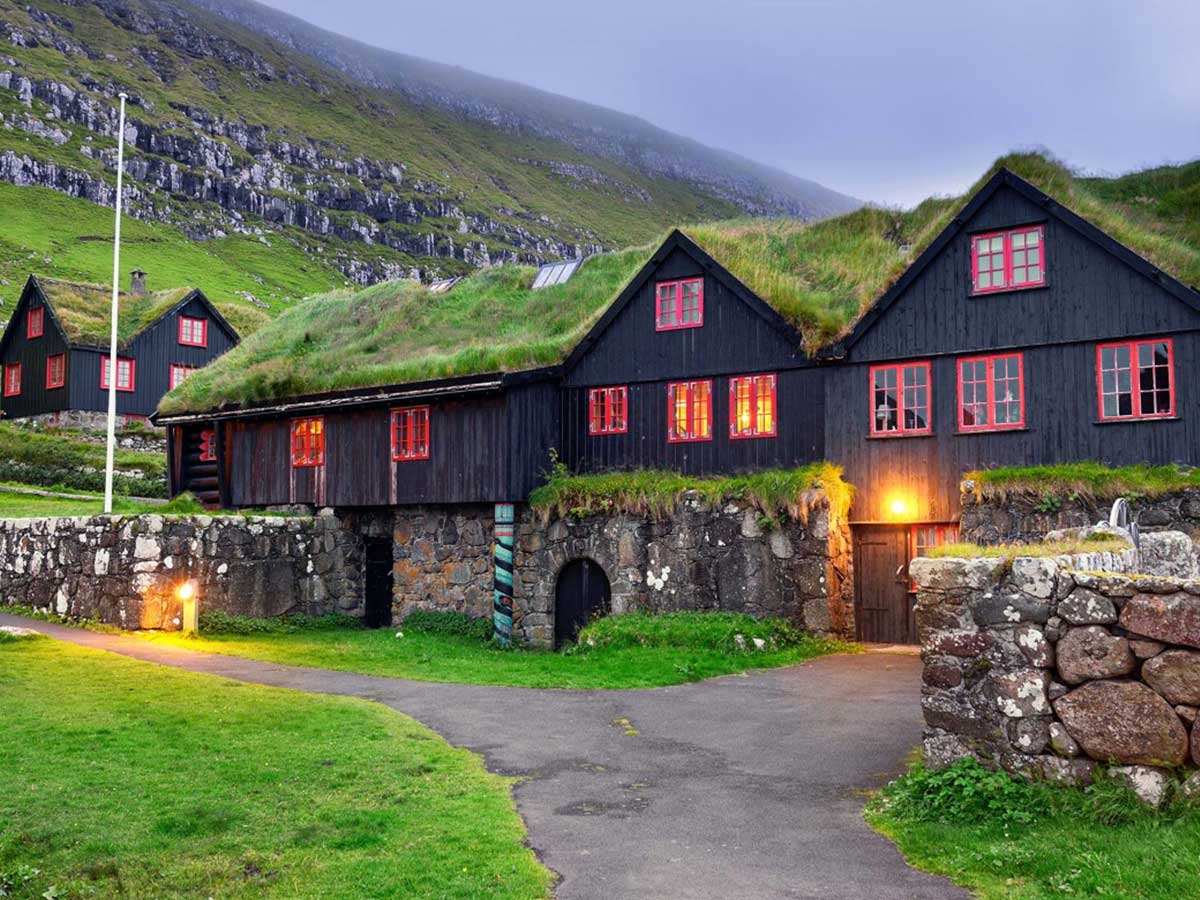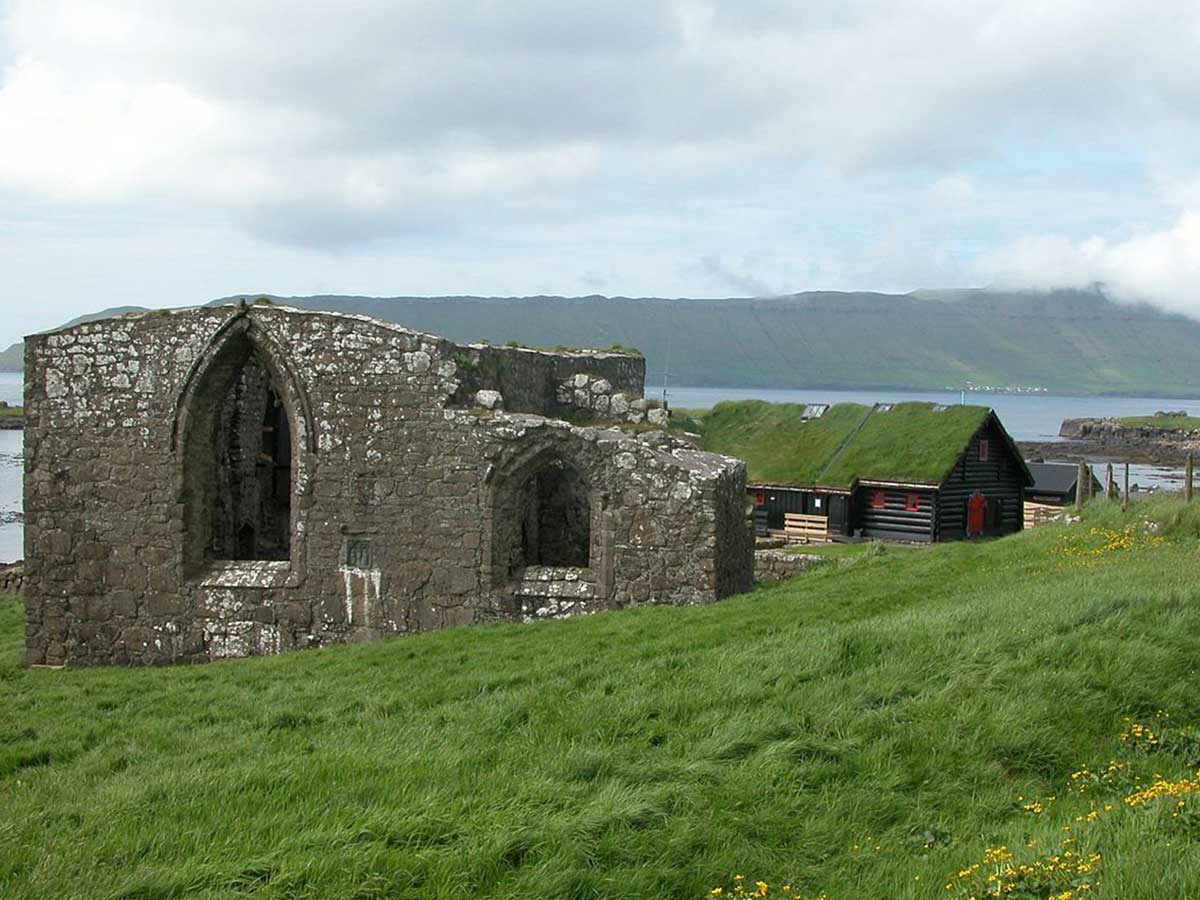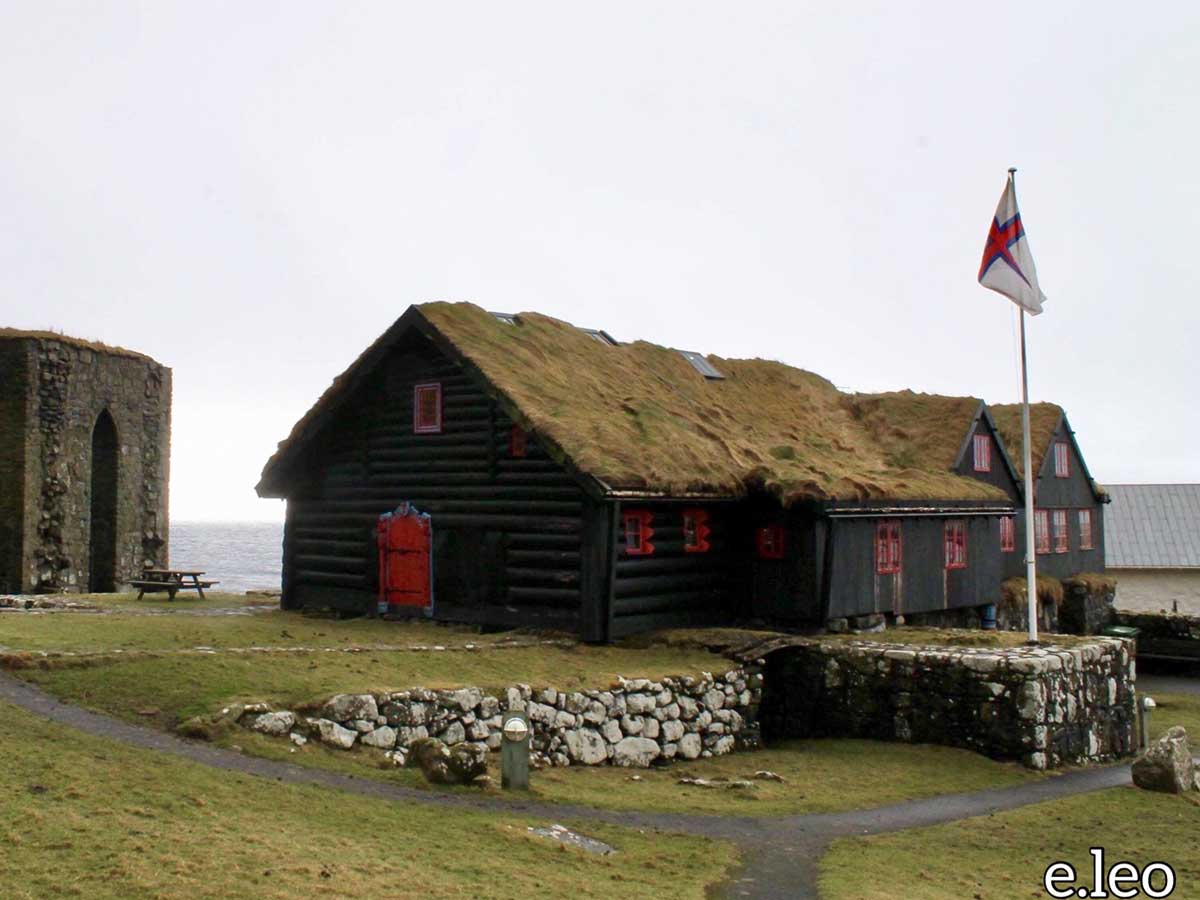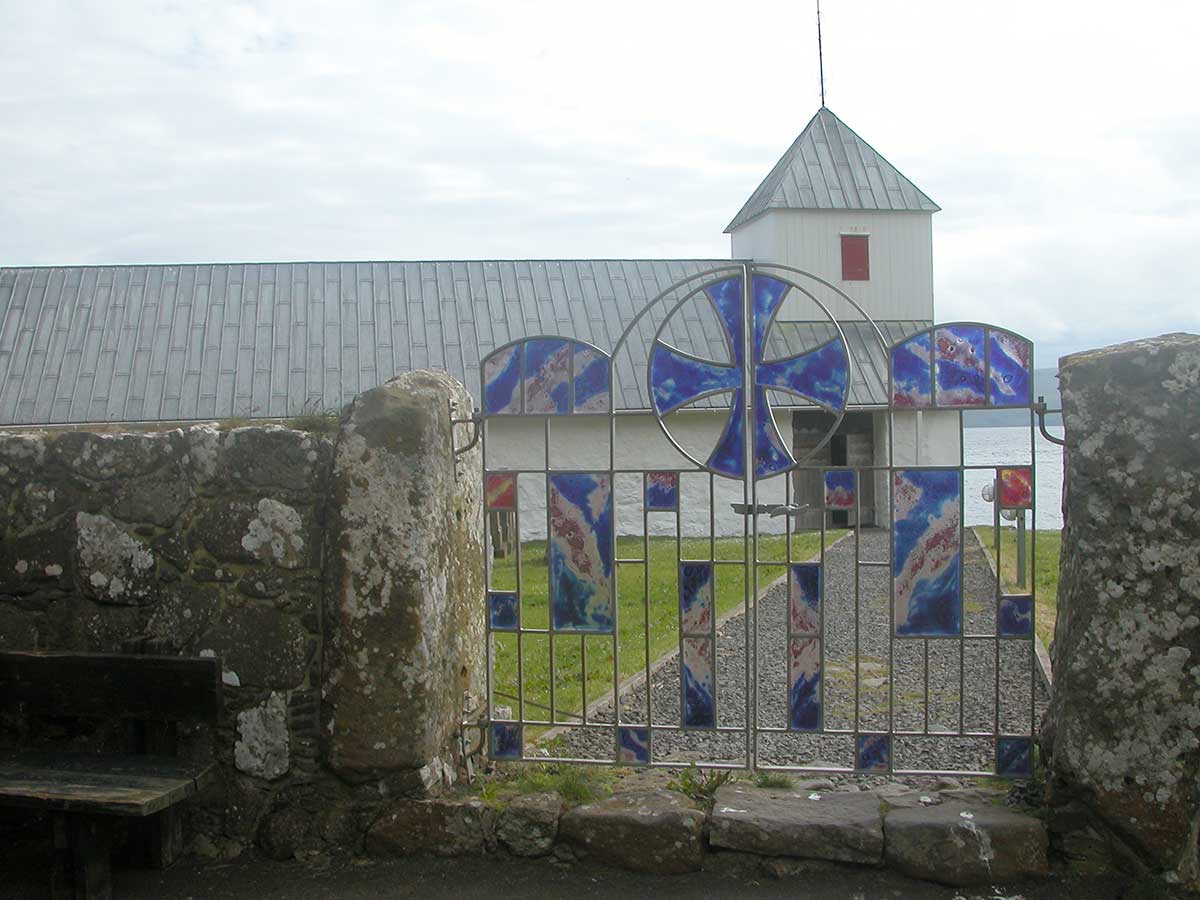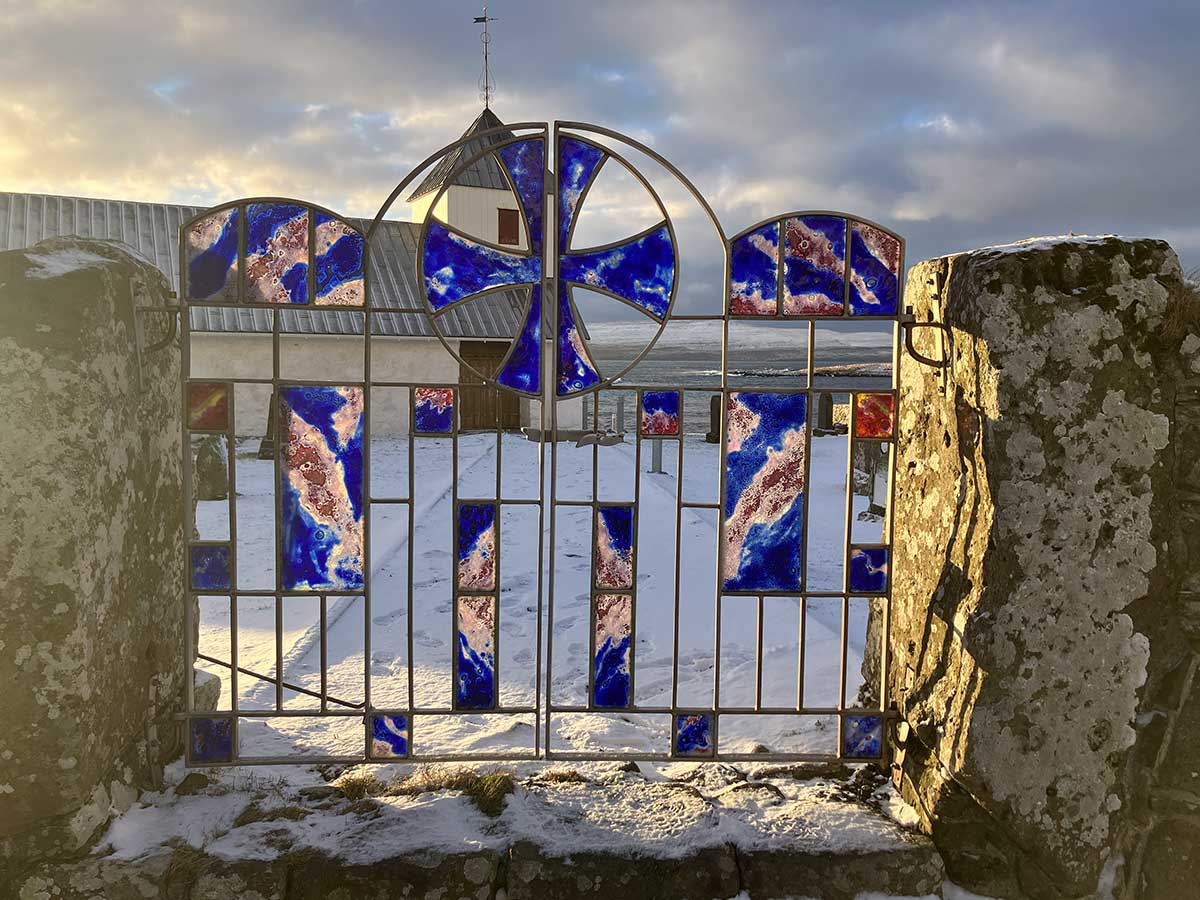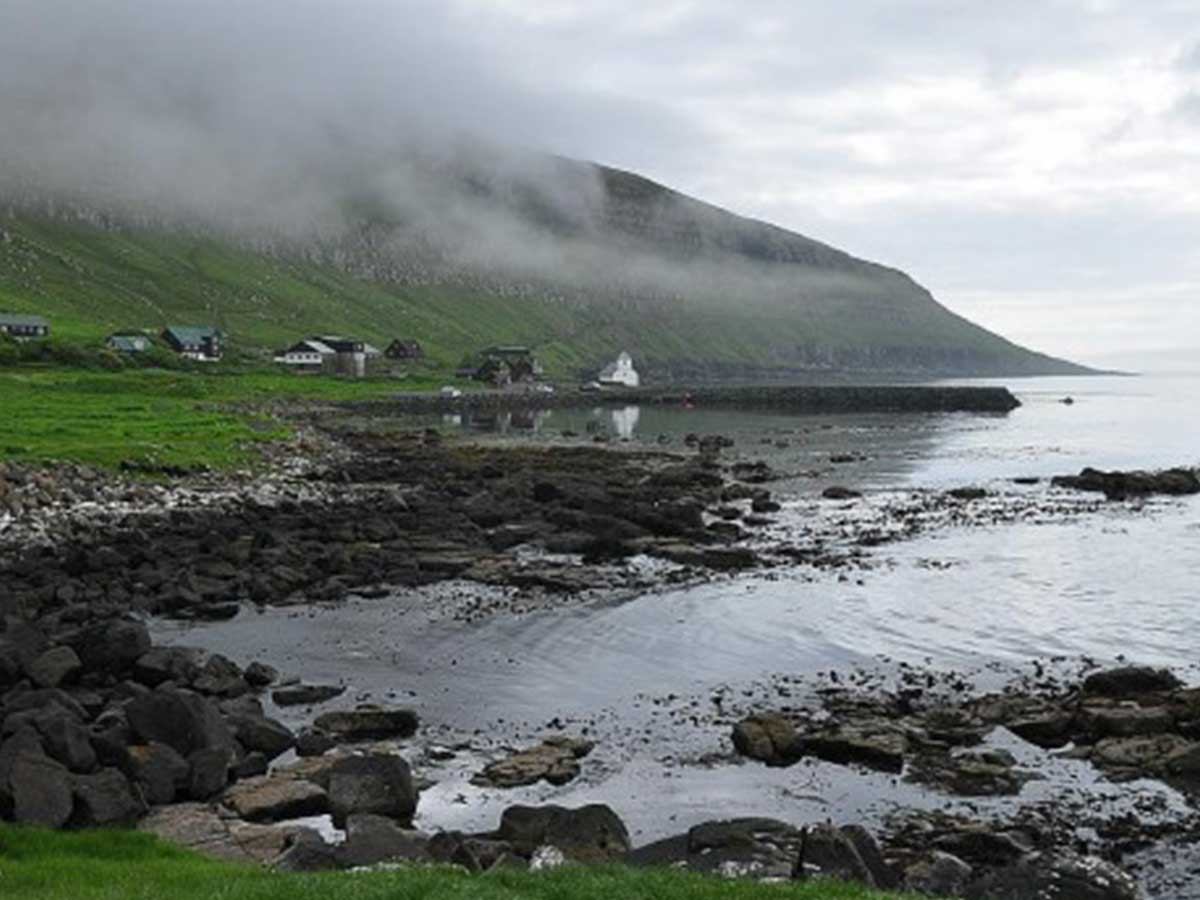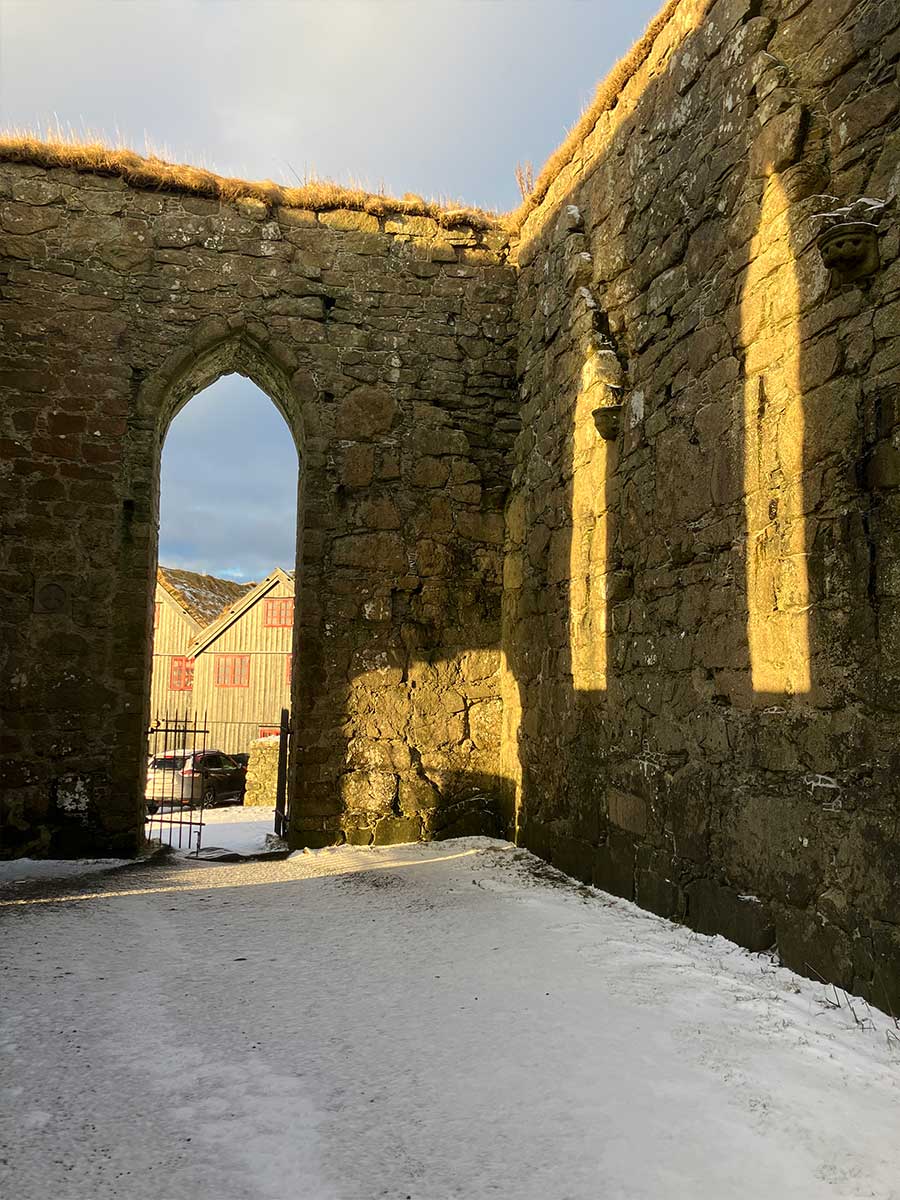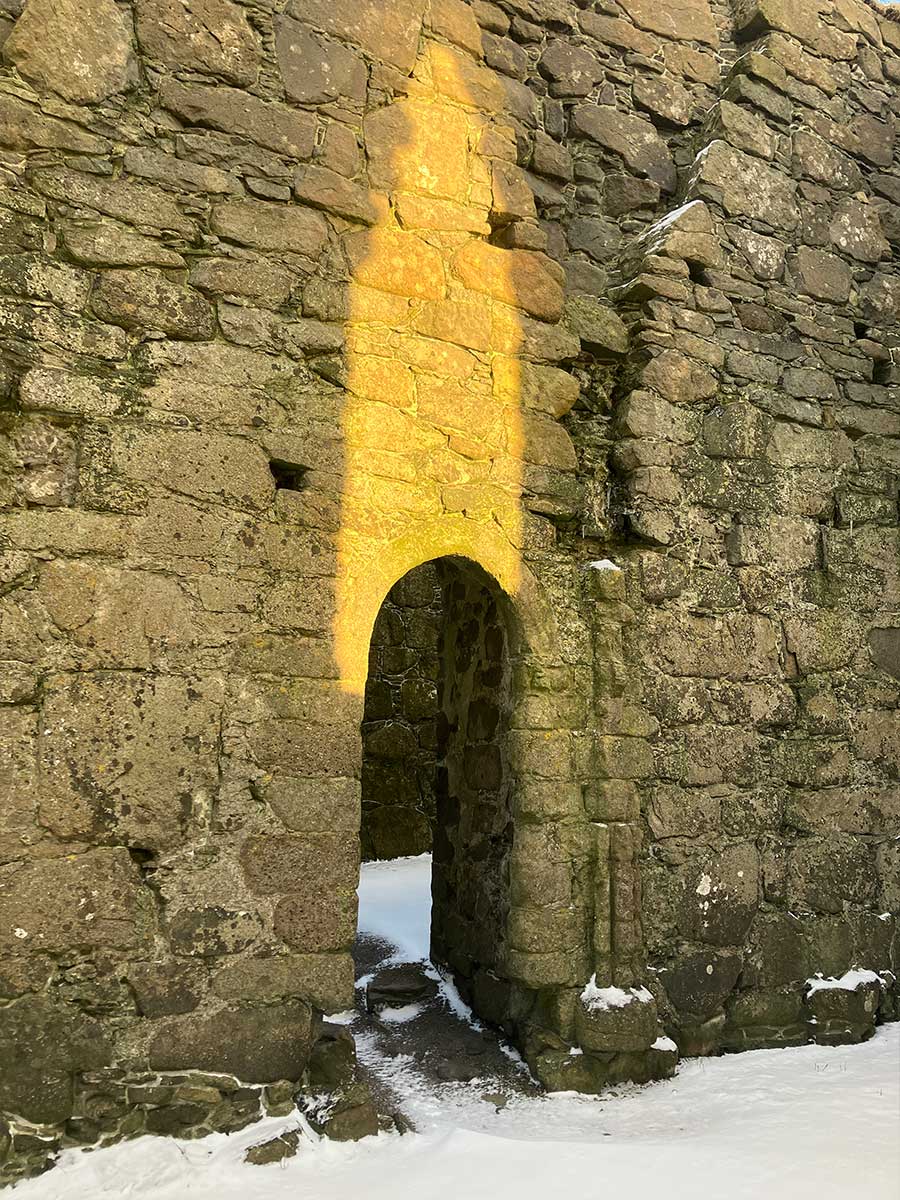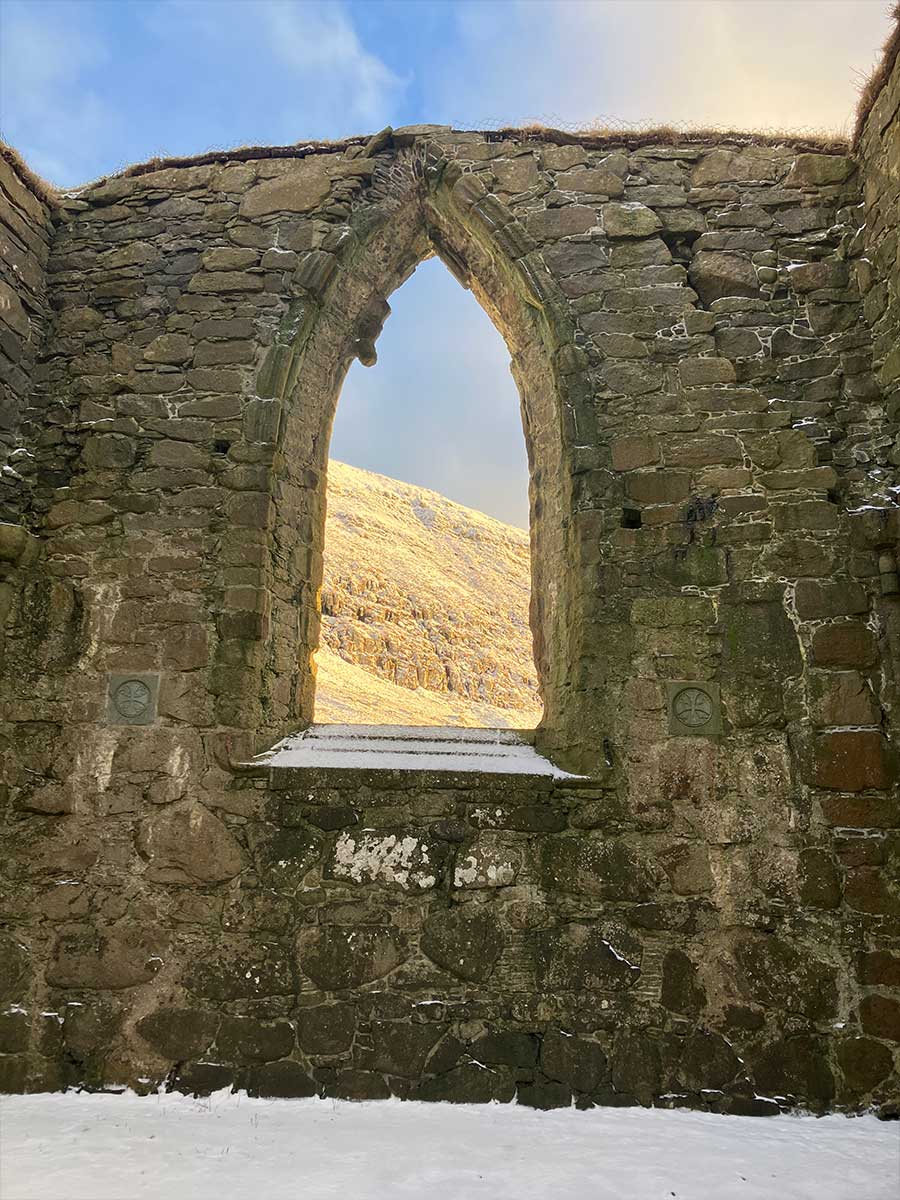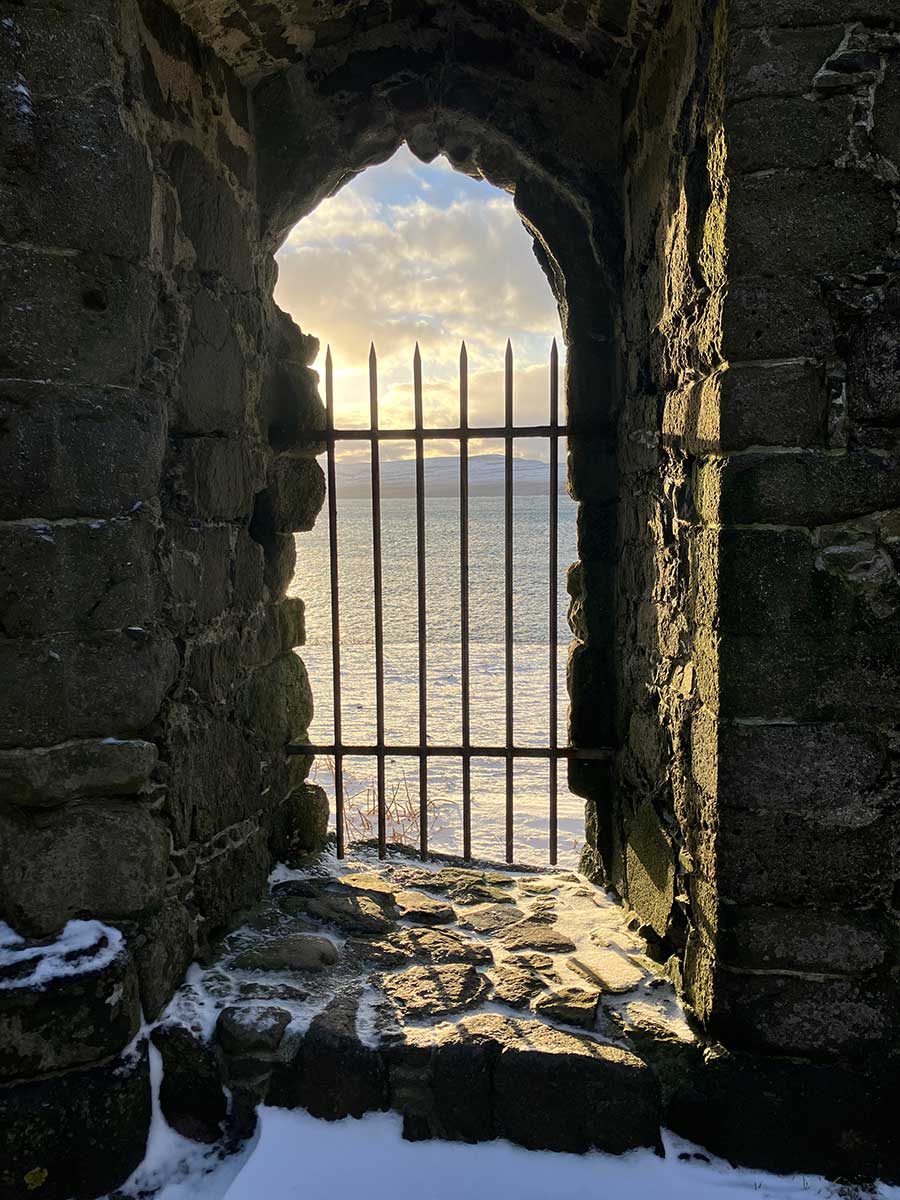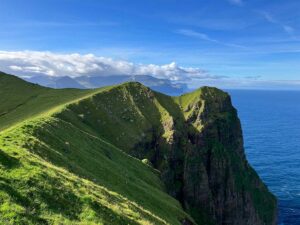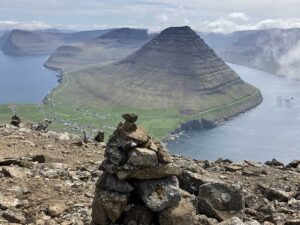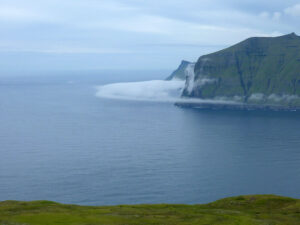On the route, you have a great view of Sandoy, Hestur, Koltur and Vágar. Legend talks about Magnus, a young man from Koltur, who courted a girl from Hestur. The girl’s father was not to know about this, so they met in secret.
Magnus swam from Koltur, when the tidal current flowed southwards, spent time with the girl, and when the tide turned, swam back to Koltur. The girl’s father discovered this. One day, as Magnus came ashore, the father stood before him with an axe and threatened to kill him. Magnus was forced to go back, and he was never heard of again. Undoubtedly, a current took him and pulled him out into the open ocean. The story goes that after this, the eddy, which is called Grísarnir, emerged inside Koltursund. This is said to have been an act of revenge. To this day, this same eddy still exists in Koltursund. As you approach Kirkjubøur, you will see a small islet, Kirkjubøhólmur, which used to be part of the mainland and part of the village. Out on the islet, you can still see old ruins of houses.
Kirkjubøur is a beautiful and charming village, where most of the houses are built in the old style. Kirkjubøur has a wealth of attractions; for example, Kirkjubømúrurin, the ruins of an old cathedral, which is believed to have been built around 1300. There is also Stokkastovurnar, the old farmhouses from about 1350, which are built on the ruins of the old bishop’s seat. The church in Kirkjubøur is the oldest church in the Faroe Islands still in use. It was built in the 1200s.
After the visit in Kirkjubøur we will go off road and up the hill walk through a moon landscape, and pass by three beautiful mountain lakes each with its specific characteristic. Risa Stova which has inspired the faroese multi artist William Heinesen to draw some of his famous oil chalk painting of trolls and other supernatural beings.
This was the way that one of the main characters in the famous faroese novel Barbara was taking on his fateful hike to Tórshavn.

